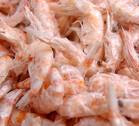
Omega-3s sourced from krill are more effective than fish oil in combating some metabolic symptoms including raised fat levels in the heart and liver and violent mood swings in obese individuals, according to Italian researchers.
The study, to be published in the August edition of the Journal of Nutrition, is supported by Norwegian krill supplier, Aker Biomarine, and concludes that while both fish-sourced and krill-sourced omega-3 oils are effective in reducing fat levels, krill is more effective.
The researchers, led by Barbara Batetta, said the mechanisms of why this was the case had not been made clear in the study, but suggested long-chain polyunsaturated fatty acids (LCPUFAs) may reduce activity in the endocannabinoid system.
The endocannabinoid system consists of a group of neuromodulatory lipids and receptors that influence appetite, pain sensation, mood and memory.
“Whereas CB1 (cannabinoid receptor type 1) receptor antagonists dampen the overactivated endocannabionid system by blocking the receptor, dietary (n-3) LCPUFA, and KO (krill oil) in particular, may reduce the activity of the endocannabinoid system by decreasing the substrate availability for endocannabinoid biosynthesis,” the researchers said.
“Such a nutritional approach, if influencing the endocannabinoid system only peripherally, might avoid the adverse psychiatric effects associated with the use of CB1 antagonists, thus potentially providing a safer alternative for ‘endocannabinoid reequilibration’ in obese individuals.”
The researchers found that, when parameters associated with obesity were considered, Aker Biomarine’s version of krill oil reduced rat heart fat levels by 42 per cent, compared to two per cent for fish oils.
In the liver, a 60 per cent reduction was observed for krill, 38 per cent for fish oil. Fat build up in the liver can lead to insulin insensitivity and cause type-2 diabetes.
While the exact mechanism for change could not be isolated the researchers stated: “It is worth noting that in all tissues exhibiting changes in endocannabinoid concentrations, EPA and DHA concentrations in the PL (phospholipid) fraction were increased and the increase was greater in the KO compared with FO (fish oil)-supplemented rats.”
Method
The four-week-old Zucker rats were for four weeks fed either a diet of KO or FO balanced for eicosapentaenoic acid (EPA) and docosahexaenoic acid (DHA), or a control group with no EPA and DHA but similar contents of oleic, linoleic, and a-linolenic acids. The dosage level was set at 2g of DHA/EPA per day.
Eighteen rats were used.
In designing the study, the researchers speculated that obesity could be linked to visceral adipose tissue (VAT) accumulation and that the metabolic consequences of that could be down to dysregulation of the endocannabinoid system and CB1 receptors.
Source: Journal of Nutrition (August)
Published ahead of print June 23, 2009 as doi: 10.3945/jn.109.104844.
‘Endocannabinoids May Mediate the Ability of (n-3) Fatty Acids to Reduce Ectopic Fat and Inflammatory Mediators in Obese Zucker Rats’

No comments:
Post a Comment